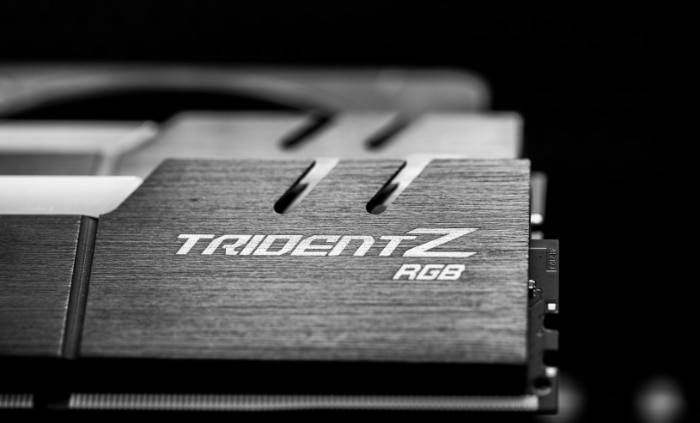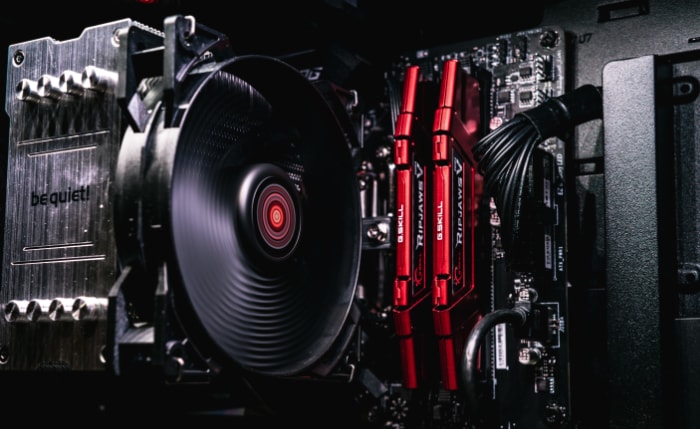Is 2666MHz RAM Good? Evaluating Memory Speeds

In the vast landscape of computer hardware, one component that often stands out in importance is the Random Access Memory (RAM). As a crucial part of any computing device, RAM allows systems to quickly access data that is in use, greatly influencing overall performance. Among the myriad of factors that determine the efficiency of RAM, its speed, measured in megahertz (MHz), plays a pivotal role.
One particular RAM speed that has been generating considerable interest among tech enthusiasts and casual users alike is 2666MHz. This article aims to thoroughly explore whether 2666MHz RAM is a good choice by examining its specifications, performance, cost-effectiveness, and ideal use scenarios.
Whether you're a seasoned tech guru or a novice looking to understand more about your computer's inner workings, this exploration of 2666MHz RAM could provide valuable insights.
Understanding RAM and MHz
Random Access Memory, or RAM, is an essential component in any computing device, from smartphones and tablets to laptops and desktops. RAM serves as the short-term memory for your device, storing and retrieving data on an as-needed basis.
Unlike a computer's hard drive, which serves as long-term storage, RAM only stores information when the device is switched on and actively processing data. This data is quickly accessible, allowing for swift data processing and improving the overall speed and performance of the system.
In essence, RAM serves as a workspace for the computer's processor (CPU) to perform computations. The more RAM a system has, the more data it can handle simultaneously, reducing the likelihood of system slowdowns or crashes.
MHz as a Measurement of RAM Speed
RAM speed is typically measured in megahertz (MHz). This metric refers to the number of cycles the RAM can complete in a second, indicating how quickly it can access and transfer data.
A higher MHz number signifies a faster RAM speed, allowing for a higher rate of data transfer. This speed can significantly impact the system's performance, particularly in scenarios involving demanding applications or large data sets.
It's important to note, however, that while speed is a crucial factor, it's not the only one to consider when assessing RAM performance. Other elements, such as latency and capacity, also come into play.
How RAM Speed Affects Computer Performance
The speed of your RAM plays a significant role in determining your computer's performance. With faster RAM (higher MHz), your computer can process more data at a quicker rate, enhancing its overall performance.
This increase in speed is especially noticeable when running memory-intensive applications like video editing software, 3D rendering tools, or complex video games.
However, it's worth noting that the impact of RAM speed can vary depending on other system components. For instance, some CPUs can only support RAM up to a certain speed, and going beyond that won't yield any additional performance benefits. Similarly, some tasks are more CPU-intensive and may not benefit significantly from faster RAM.
The Specifications of 2666MHz RAM
The 2666MHz RAM, often referred to as DDR4-2666 (Double Data Rate 4th generation), is a type of memory module that operates at a speed of 2666MHz. This speed indicates the number of cycles it can perform per second, effectively dictating how quickly it can access and transfer data.
DDR4-2666 RAM typically has a standard data rate of 21300 MB/s (megabytes per second). This metric is crucial in determining the amount of data that can be transferred to and from the RAM within a second.
Furthermore, DDR4-2666 RAM modules often come with different capacities, typically ranging from 4GB to 64GB. The capacity of the RAM is another significant factor that influences a computer's performance, allowing it to handle more applications simultaneously.
Comparison with Other RAM Speeds
When compared to lower-speed RAM modules, such as DDR4-2133 (2133MHz), the DDR4-2666 RAM offers faster data transfer, potentially enhancing system performance. However, compared to higher-speed modules like DDR4-3200 (3200MHz), the DDR4-2666 may not offer the same level of speed.
It's crucial to note, however, that while faster RAM can theoretically provide better performance, the real-world benefits often depend on the nature of the tasks being performed and the other components of the system.
For instance, some processors may not be able to take full advantage of higher-speed RAM, and certain tasks may not be heavily dependent on RAM speed.
Performance Evaluation of 2666MHz RAM
For general computing tasks, such as browsing the web, using office applications, or streaming videos, 2666MHz RAM typically provides more than sufficient speed.
These tasks are not highly demanding in terms of memory speed, and the difference between 2666MHz and higher-speed RAM modules may not be perceptible to most users.
Evaluation of 2666MHz RAM in Gaming
In the context of gaming, the performance of 2666MHz RAM can vary significantly depending on the specific game, the game settings, and the other hardware in the system. Some games are more memory-intensive than others and may benefit from higher-speed RAM.
However, many games perform quite well with 2666MHz RAM, especially when paired with a powerful CPU and graphics card.
Performance of 2666MHz RAM in Professional Applications
Professional applications, such as video editing software, 3D rendering tools, and large-scale data processing programs, often demand high memory speeds and capacities.
While 2666MHz RAM can handle these tasks, the performance may not be as optimal as with higher-speed RAM modules. Users who frequently work with such demanding applications may want to consider RAM with higher speeds.
Energy Efficiency and Heat Generation Considerations
One often overlooked aspect of RAM performance is energy efficiency and heat generation. Higher-speed RAM modules typically consume more power and generate more heat.
In contrast, 2666MHz RAM tends to be more energy-efficient and runs cooler, which can be beneficial in systems where power consumption or heat generation is a concern.
Use Cases: Who Should Use 2666MHz RAM?

2666MHz RAM is highly versatile and can handle a wide range of tasks efficiently. It is an excellent choice for general computing, including web browsing, document editing, multimedia consumption, and casual gaming.
For users who prioritize energy efficiency and lower heat generation, 2666MHz RAM presents a compelling option. It operates at a lower voltage compared to higher-speed RAM, resulting in less power consumption and reduced heat output, which can extend the lifespan of the components and the system overall.
Specific Types of Users Who Would Benefit from 2666MHz RAM
Casual Users: For everyday users who mainly use their computers for browsing, streaming, office work, and other non-intensive tasks, 2666MHz RAM should provide a smooth and responsive experience.
Casual Gamers: Casual gamers who play less demanding games, or are not particularly concerned about achieving the absolute highest performance, can find a good balance of performance and cost in 2666MHz RAM.
Cases Where Higher or Lower Speed RAM Might Be a Better Choice
Professional Users: For professionals who frequently use resource-intensive applications, such as video editing, 3D modeling, or large-scale data processing software, a higher-speed RAM may provide noticeable performance improvements.
Enthusiast Gamers: Gamers who play high-end games at maximum settings, or who are interested in competitive gaming where every bit of performance can make a difference, might benefit from higher-speed RAM.
Budget-Constrained Users: On the other hand, users on a tight budget who primarily perform light tasks might not notice a significant performance difference with lower-speed RAM, making it a more cost-effective choice.
Cost-Benefit Analysis of 2666MHz RAM
When considering the cost of RAM, the price often increases with the speed and capacity of the module. Lower-speed modules such as 2133MHz RAM are typically the most affordable, while higher-speed modules like 3200MHz or 3600MHz RAM tend to be more expensive.
2666MHz RAM, being somewhere in the middle of the speed spectrum, is generally more affordable than higher-speed options while offering better performance than lower-speed ones. This makes it an appealing choice for many users seeking a balance between cost and performance.
Determining the Value-for-Money Aspect of 2666MHz RAM
In terms of value for money, 2666MHz RAM often delivers a solid performance-to-price ratio. For many users, the performance improvements offered by higher-speed RAM may not justify the additional cost, especially if their typical computer usage is not highly demanding in terms of memory speed.
On the other hand, for users who frequently run resource-intensive applications, the cost of higher-speed RAM may be justified by the performance benefits.
It is also worth noting that the value proposition of RAM speed can depend on other system components, such as the CPU and GPU, as some combinations can better utilize higher-speed RAM than others.
Conclusion
Throughout this exploration, we have endeavored to gain a comprehensive understanding of 2666MHz RAM, its specifications, and its performance across various applications. In the vast landscape of computer hardware, understanding the role and impact of RAM speed can be crucial in optimizing system performance and ensuring a smooth computing experience.
2666MHz RAM emerges as a solid middle ground in the realm of RAM speeds. While it may not be the fastest option available, it does offer a commendable balance between performance and cost.
For general computing tasks, multimedia consumption, and casual gaming, this RAM speed tends to deliver more than satisfactory performance.
Professional users and enthusiast gamers who frequently run resource-intensive applications may see noticeable performance improvements with higher-speed RAM.
However, it's essential to remember that these benefits often come with a higher price tag, and the overall system configuration must be able to leverage this additional speed effectively.
In conclusion, the “goodness” of 2666MHz RAM is subjective and depends largely on individual user needs, the nature of the tasks performed, and the specific configuration of the system. It may not be the best choice for everyone, but for many users, 2666MHz RAM provides a satisfactory balance of cost, performance, and efficiency.
As with all technology choices, understanding your specific requirements and constraints is key to making the most informed decision.
Frequently Asked Questions (FAQs)
Can I Mix RAM Modules of Different Speeds?
Technically, it is possible to mix RAM modules of different speeds, but it is not recommended. When RAM modules of different speeds are used together, all modules will operate at the speed of the slowest module. This could potentially negate the benefits of the faster RAM module.
Will Adding More RAM Speed Up My Computer?
Adding more RAM can potentially speed up your computer if your current RAM is insufficient for the tasks you're performing. If your system is often running out of RAM, adding more can reduce the need for using slower hard drive or SSD space for “virtual memory.”
However, if your current RAM is rarely fully utilized, adding more RAM may not significantly improve system performance.
How Can I Check My Current RAM Speed?
You can check your current RAM speed via your system's BIOS or UEFI, or by using software tools in your operating system. For Windows users, the Task Manager provides basic RAM information, while more detailed information can be obtained using tools such as CPU-Z. Mac users can find RAM information in the “About This Mac” window or by using the System Information tool.


